Opinion
The Elizabeth Line has the capacity to give London breathing room
The Elizabeth Line will help Londoners’ mobility around the city – even those who don’t use it. Peter Nilson offers some thoughts from the launch day.
Last May saw the launch of passenger services on the Elizabeth Line (formerly known as Crossrail). It’s a day that many had been waiting for eagerly, the beginning of the end of a decades-old concept to run services from commuter belt towns to the east of London, through the city centre, and out to the west – and vice-versa, of course.
I spent a good chunk of the day on the Paddington–Abbey Wood branch, the new section of line. The other two of the three sections that comprise the Elizabeth Line have been running as TfL Rail for over five years now, but the Paddington–Abbey Wood section is what now links everything together. This also marks the end of TfL Rail, as those sections have now been rebranded as the Elizabeth Line, unifying all three sections. Farewell TfL Rail.
I must say I’m impressed. Despite all the troubles and delays that Crossrail has gone through, the result certainly delivers on what it set out to do.
Network Rail CEO Andrew Haines. Credit: Network Rail
What the Elizabeth Line is – and isn’t
“The thing to think about the Elizabeth Line is that it’s not a Tube line,” said Crossrail CEO Mark Wild in March this year. “It might be called ‘a line’, but it’s actually a new mode of transport, a bit like you’d have the RER in Paris or the S-Bahn in Munich.”
So, the CEO of the project says that the Elizabeth Line isn’t a tube line. The thing is, I don’t think many Londoners really care if it’s a tube or a suburbs-to-city-centre commuter rail service.
They’ve been used to swapping between the London Underground and London Overground, the suburban rail network run by Transport for London (TfL), for years now. Combined with National Rail suburban services and other options such as the London Trams in south London, these services form constituent parts of the mesh that is the TfL network.
That said, whether they are conscious of the difference or not, they’ll certainly feel it. The rolling stock is noticeably bigger than a tube train. The Elizabeth Line launched with 9-carriage Class 345 Aventra trains built by Bombardier (which was acquired by Alstom last year), which had also previously been used on the TfL Rail-operated sections. You really notice how much more space there is compared to other transport options in the city (looking at you, Central Line) and the open gangway design only furthers the capaciousness.
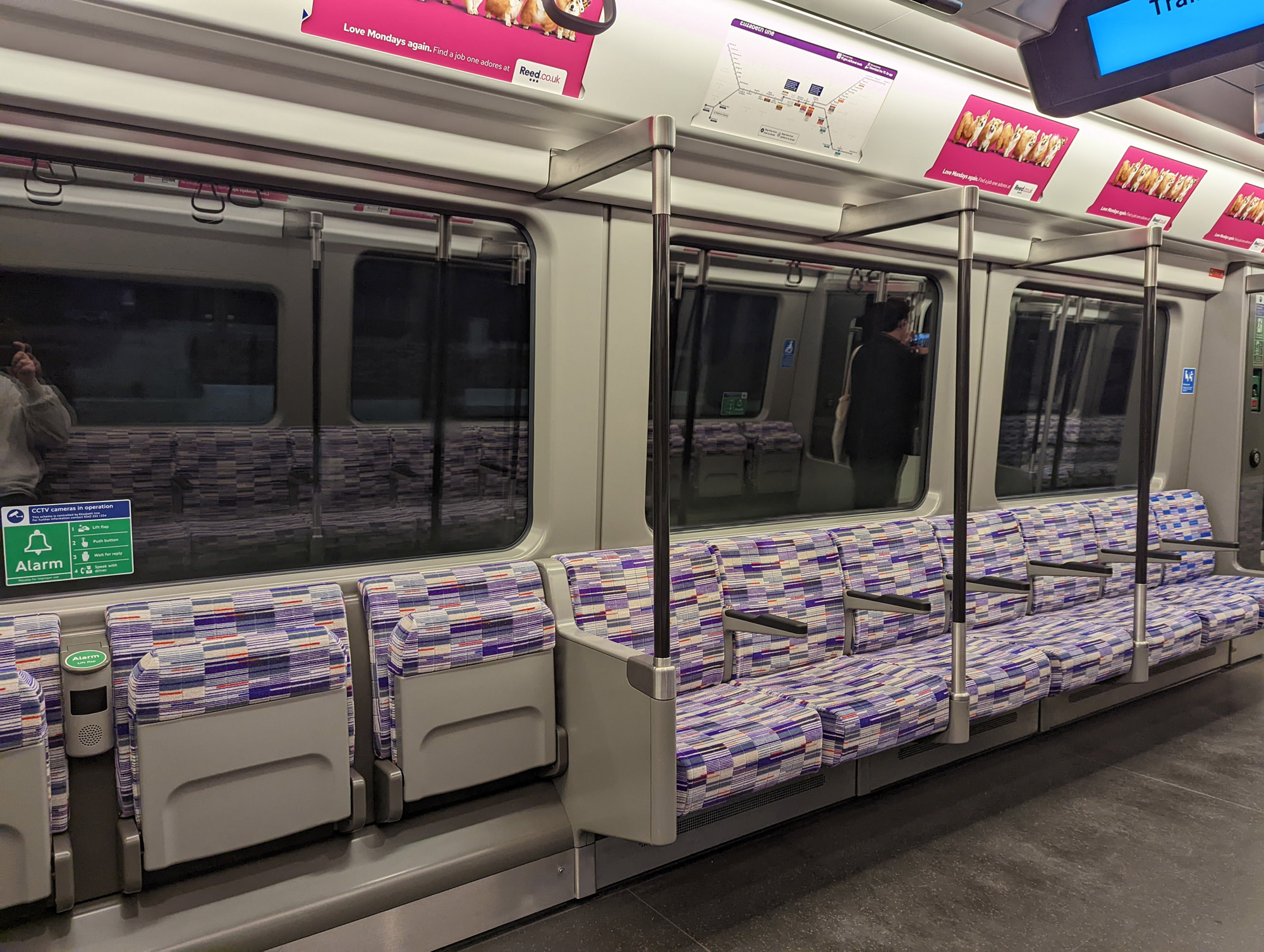
Flip-down seating on the trains creates adaptive space on the train. Credit: Peter Nilson
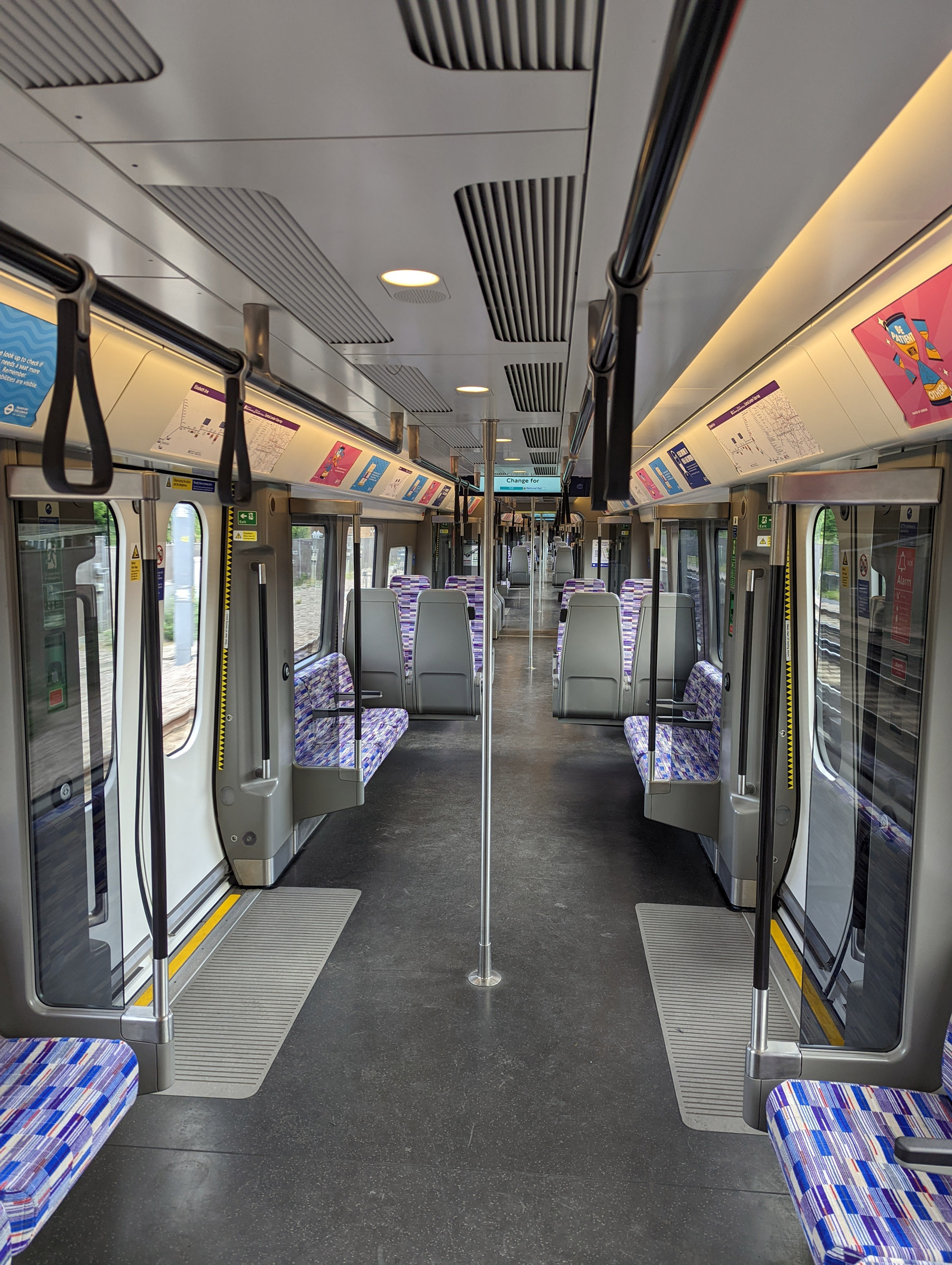
Seating on the Elizabeth Line trains is mixed-format. Credit: Peter Nilson
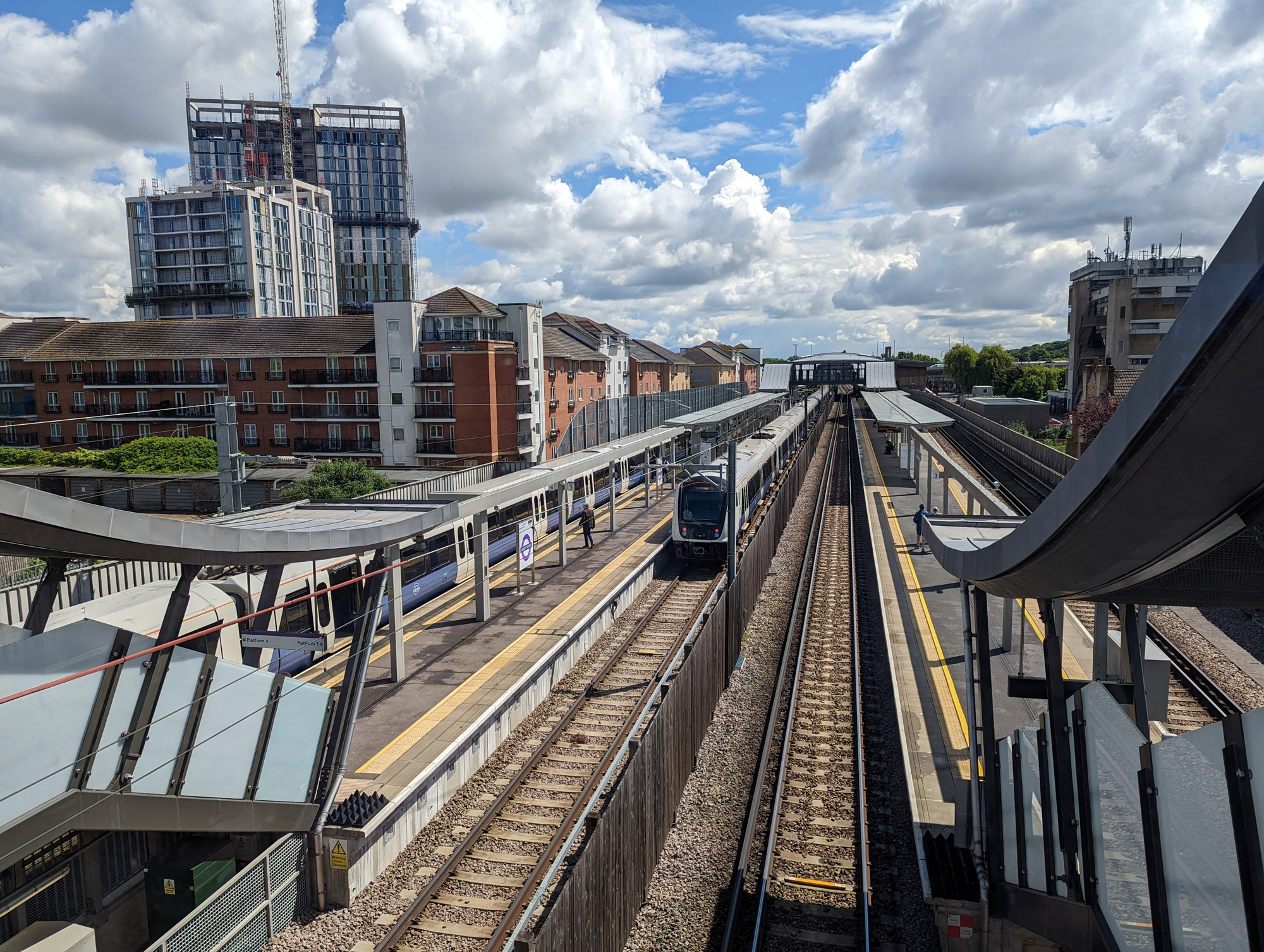
Elizabeth Line trains at Abbey Wood Station. Credit: Peter Nilson
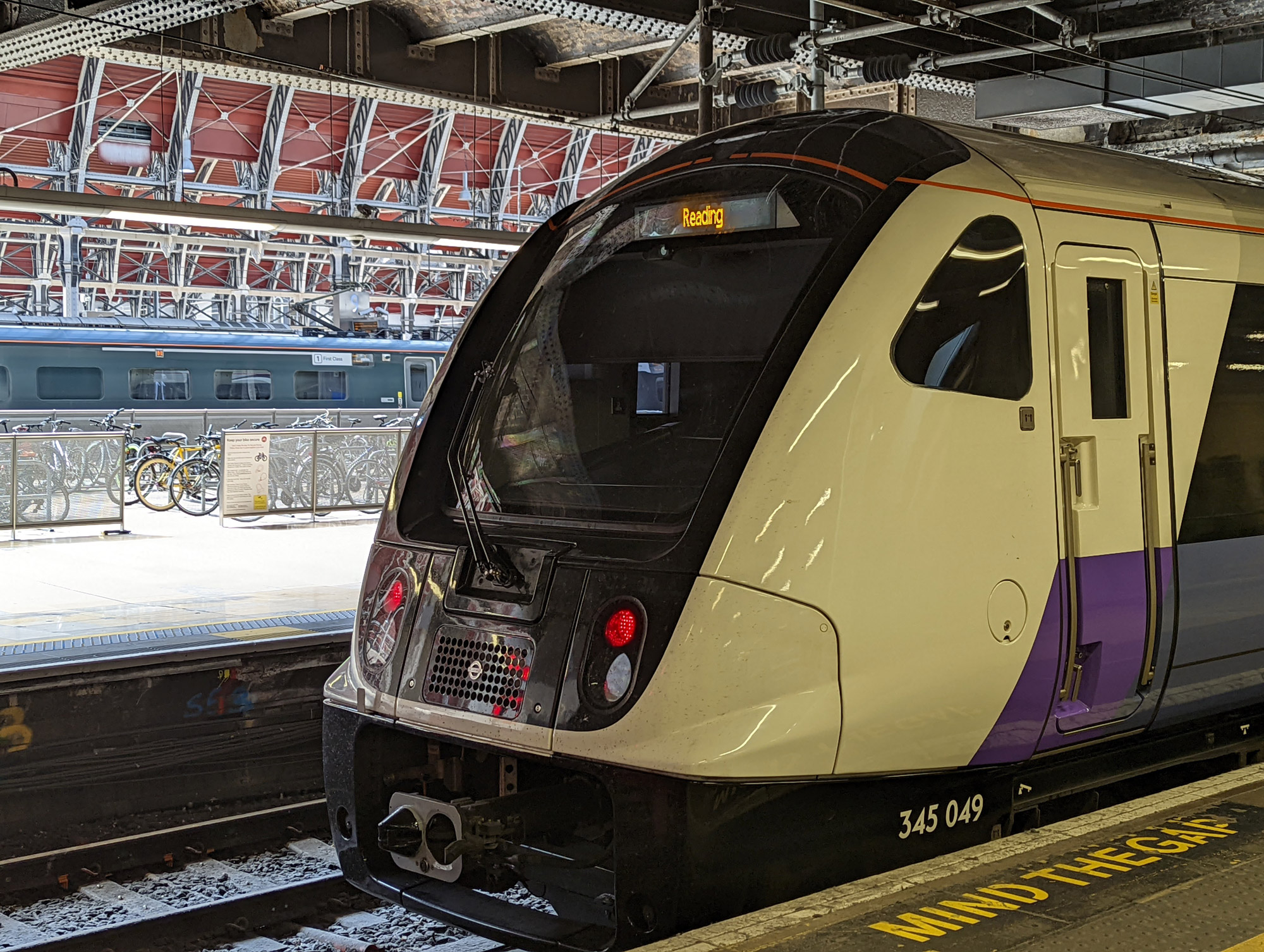
An Elizabeth Line train to Reading waiting to depart at Paddington Station. Credit: Peter Nilson
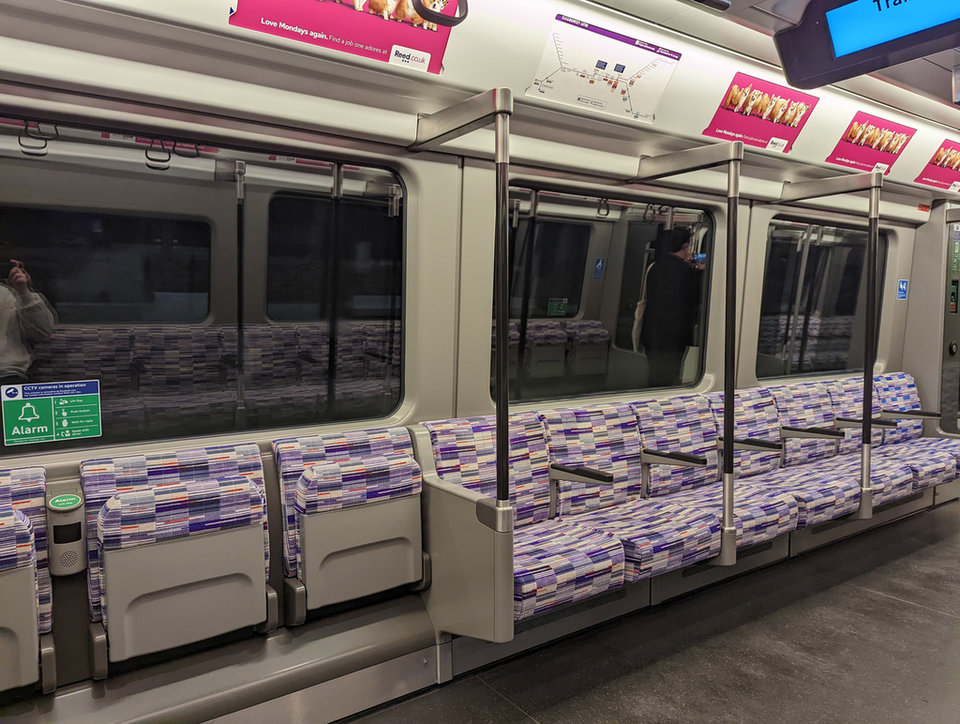
Trespassing on the railway is an age-old problem. Credit: Peter Nilson
The Elizabeth Line is an incredibly smooth journey. It’s definitely smoother than any of the tube lines in London, and I think probably smoother than most mainline trains – which I suppose should be expected given the fact that these tracks were built for these trains, and they’re new.
And it is quiet. I cannot stress enough how quiet it is. If you travel on the Northern Line to Tottenham Court Road and change to the new line, you will really notice the difference. I would say, across the board, this is the best passenger experience on the TfL network in terms of comfort.
Across the board, this is the best passenger experience on the TfL network in terms of comfort.
All that said, the full journey isn’t seamless yet. The interchanges at Liverpool Street and Paddington are a little bit more of an effort than you’d want, especially if you’re travelling with heavy luggage. The interchange at Paddington could be particularly arduous for travellers coming from Heathrow Aiport. TfL expects the sections to be fully connected by Autumn 2022, at which point passengers can travel directly across the whole line without having to change at these stations.
Bond Street station is still under construction, and TfL has been hesitant to confirm an opening date; although in March, Wild told Building Magazine that they expect Bond Street to open between August and September this year. For now, you can see some nice ‘coming soon’ roundels on the unfinished platform as trains whizz through the station between Paddington and Tottenham Court Road.
Capacity, capacity, capacity
So, the trains are comfortable and all, but the real reason the Elizabeth Line is so important for London is capacity. The Aventra trains are roughly 200m long, and each one can potentially carry 1,500 passengers. For context, the S7 rolling stock used on District and Circle lines has a capacity of around 1,300 passengers.
The stations are also designed for masses of people to swarm through them. Wide corridors and high ceilings remove that claustrophobic feeling you can get on the tube network. Mayor of London Sadiq Khan has said the stations are “like cathedrals”. I think that’s a bit of an exaggeration compared to some of the basilica I’ve seen, but I do agree that these new stations are big. There is a lot of space in the connecting corridors, and the platforms are incredibly long.
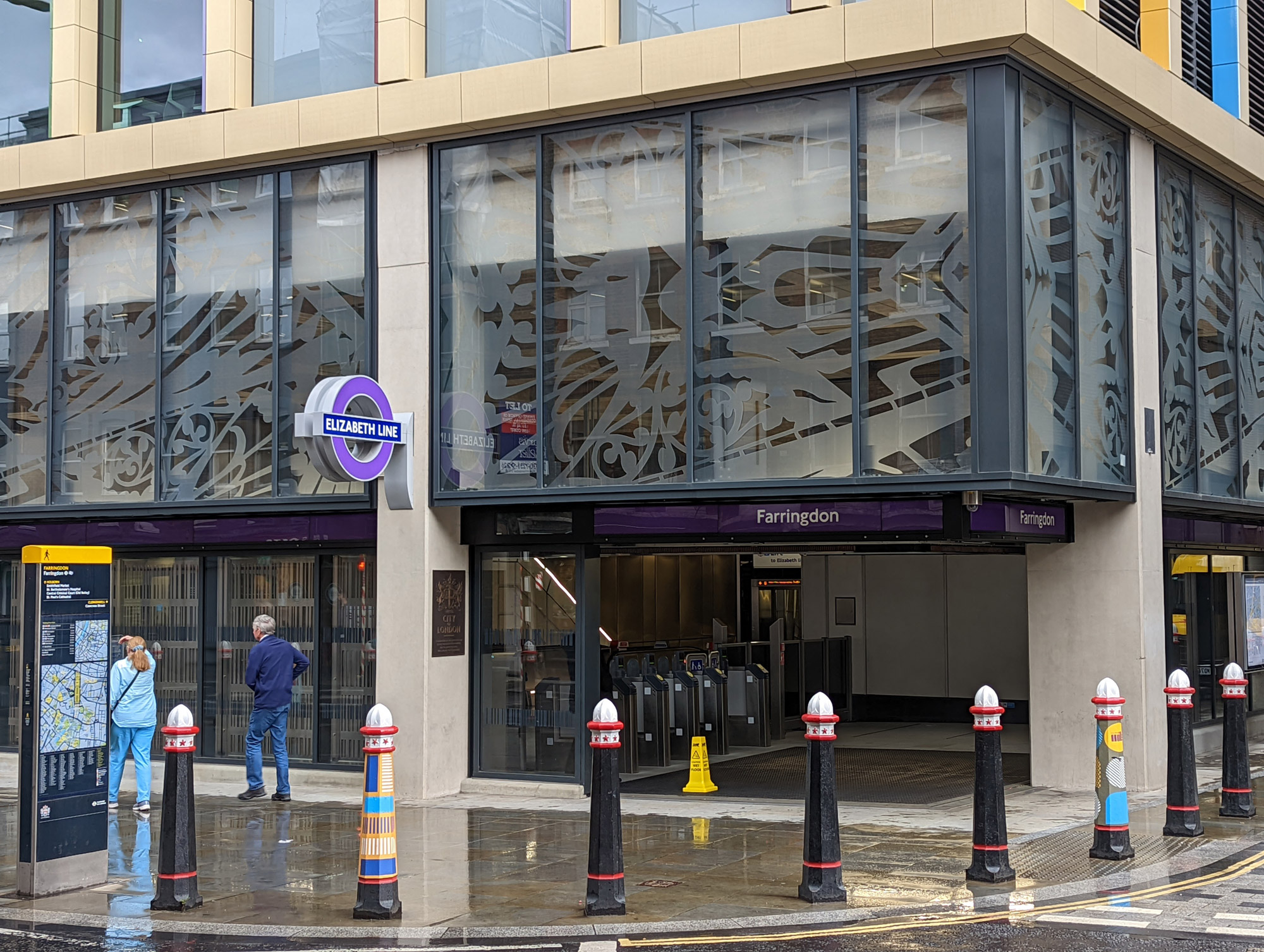
The new Barbican entrance for Farringdon station features not one, but two funicular lifts. Credit: Peter Nilson
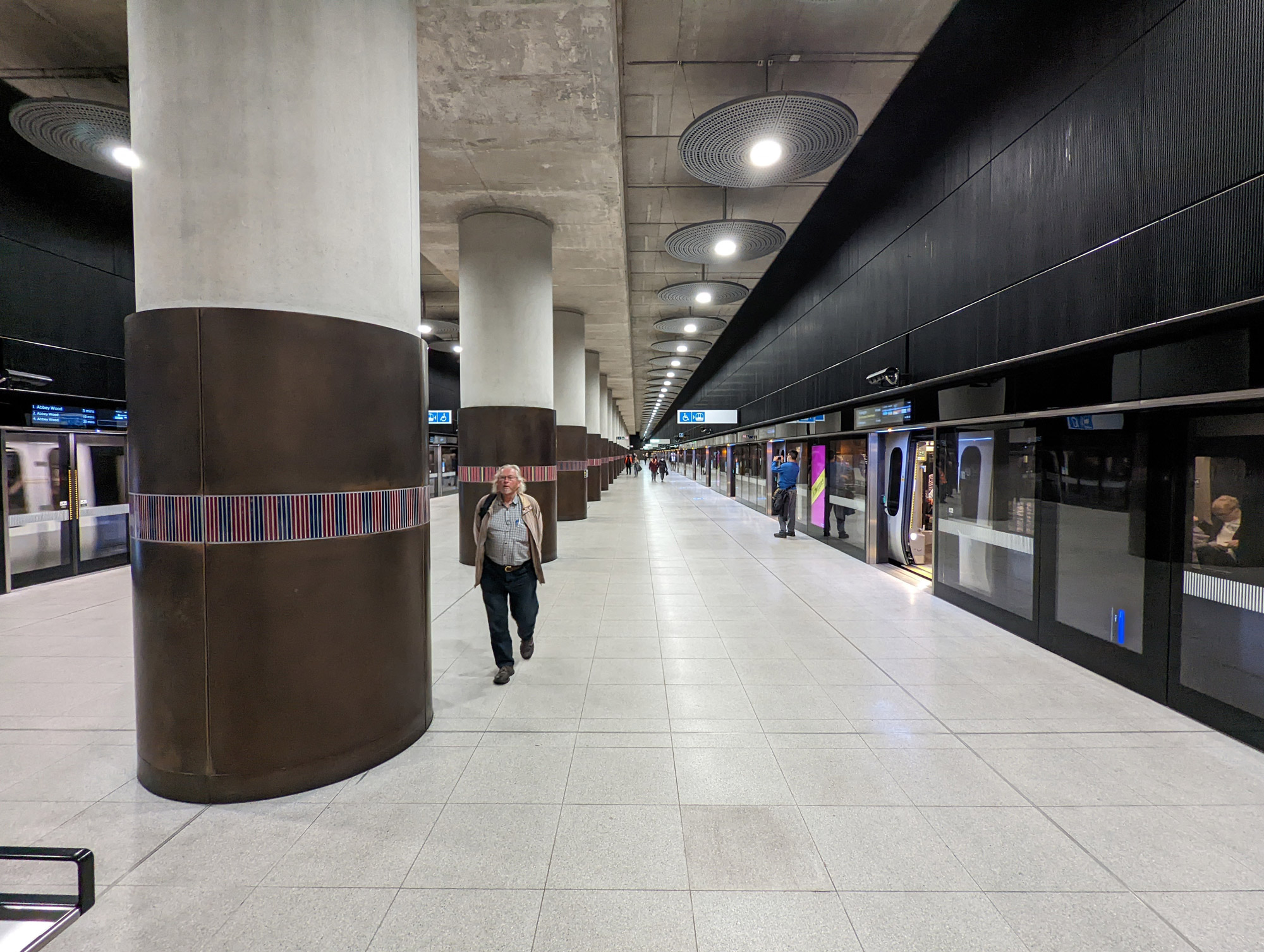
Platforms at the new Woolwich Elizabeth Line station. Credit: Peter Nilson
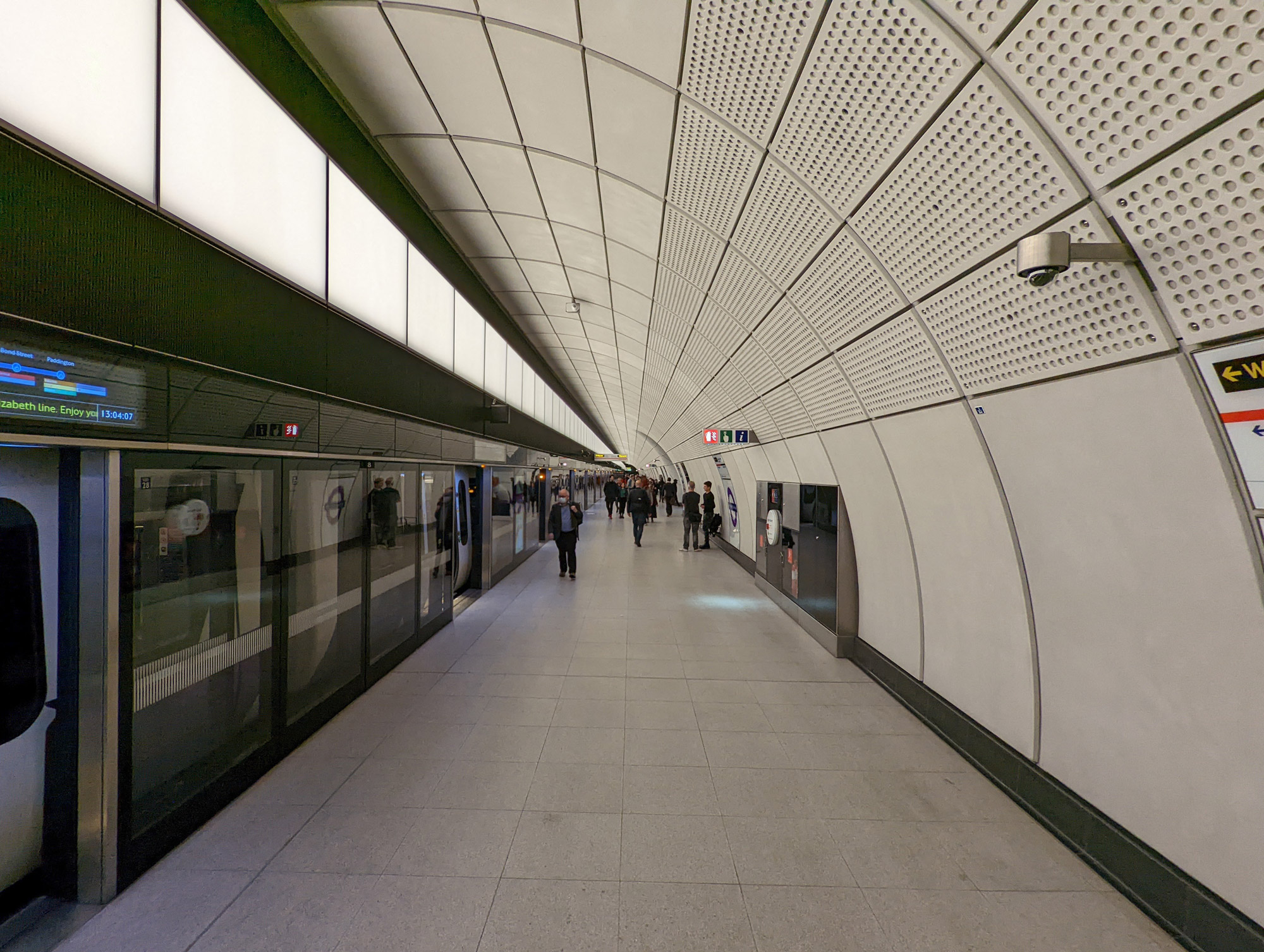
The platform at Tottenham Court Road disappears in the distance. Credit: Peter Nilson
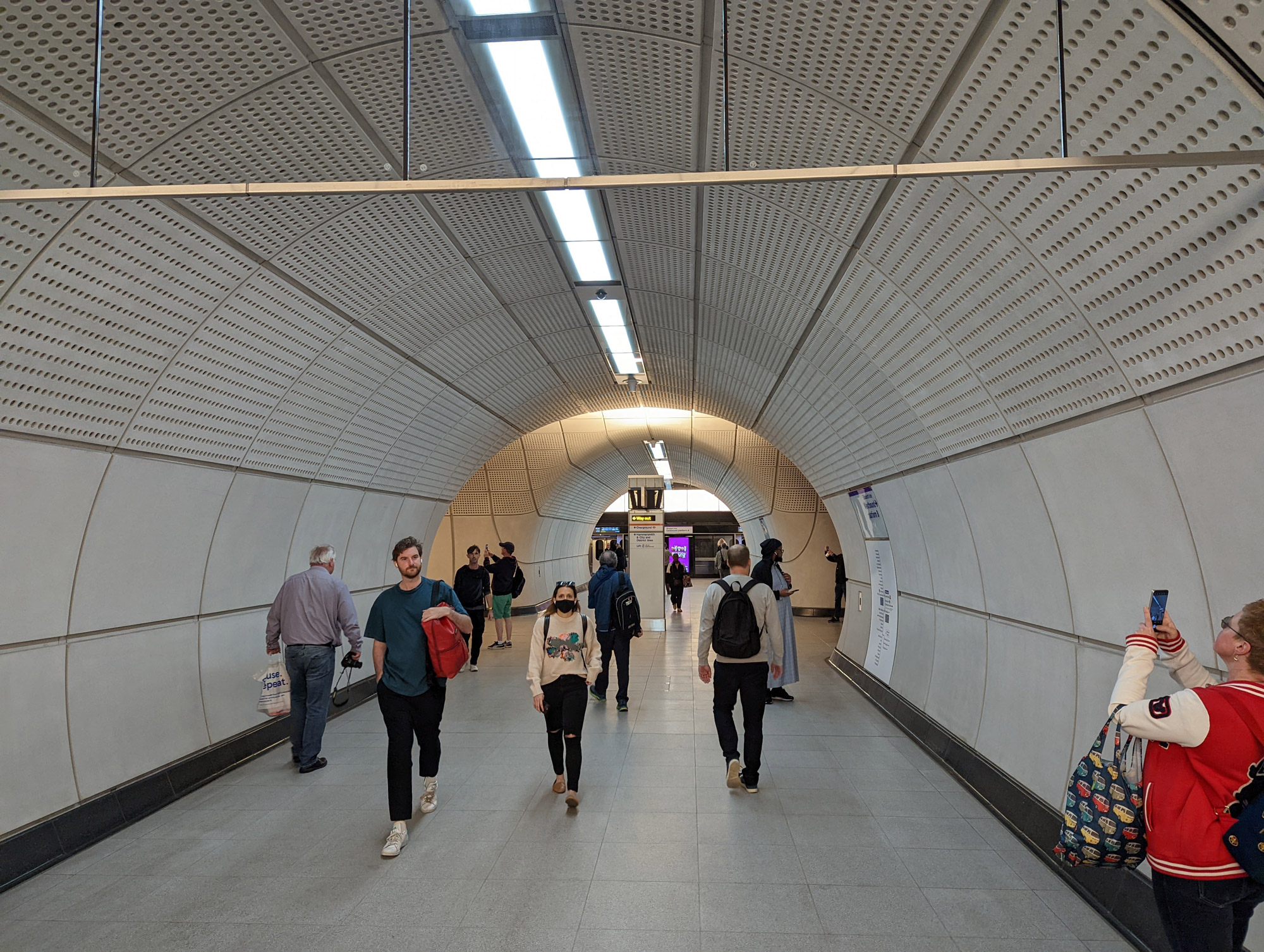
The corridors in all stations are wide and lofty, as is this one at Whitechapel. Credit: Peter Nilson
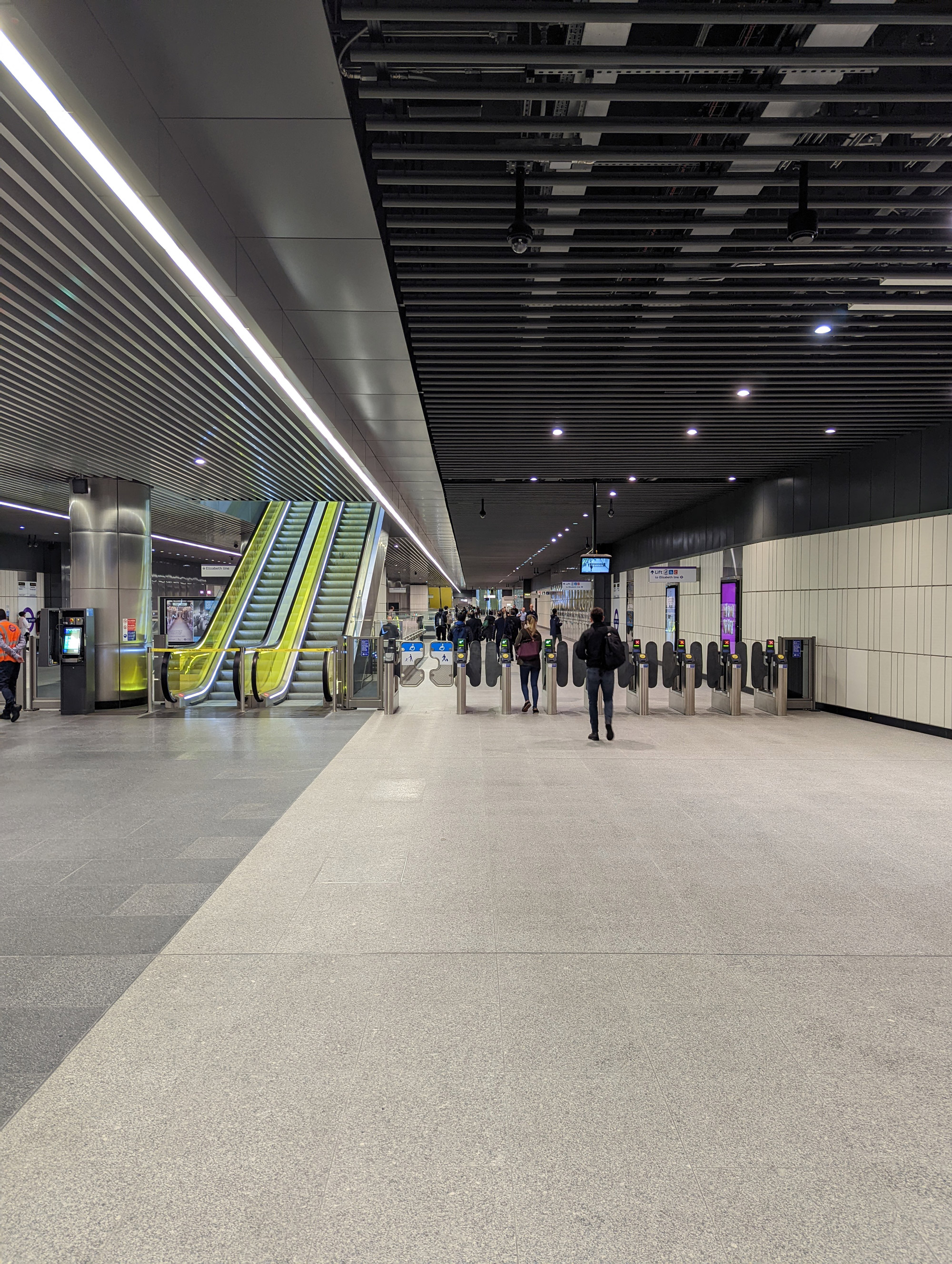
The gateline at Canary Wharf, with canary yellow escalators. Credit: Peter Nilson
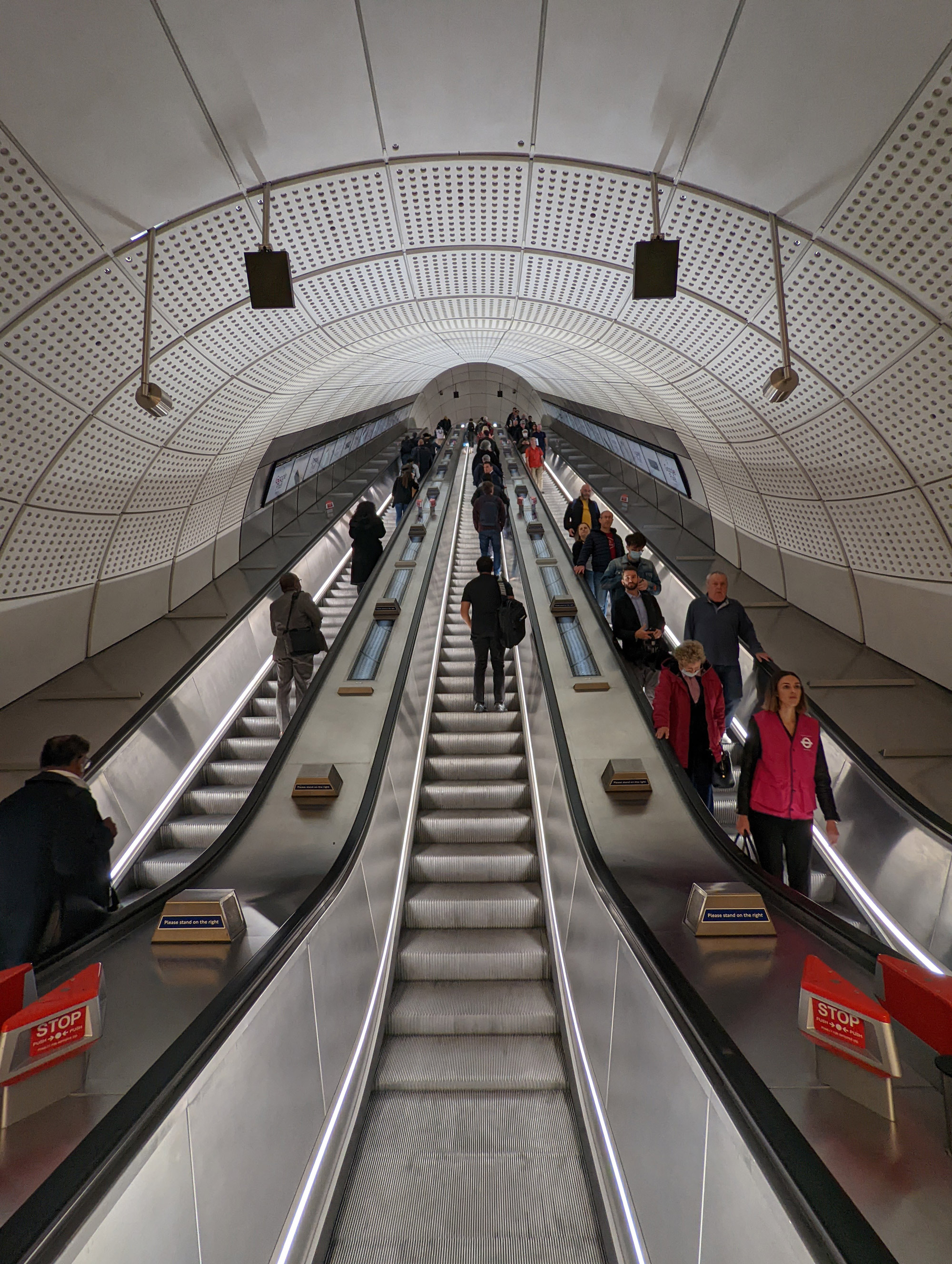
Fans of escalators will be pleased to know the Elizabeth Line contains a multitude of them, such as this one at Liverpool Street. Credit: Peter Nilson
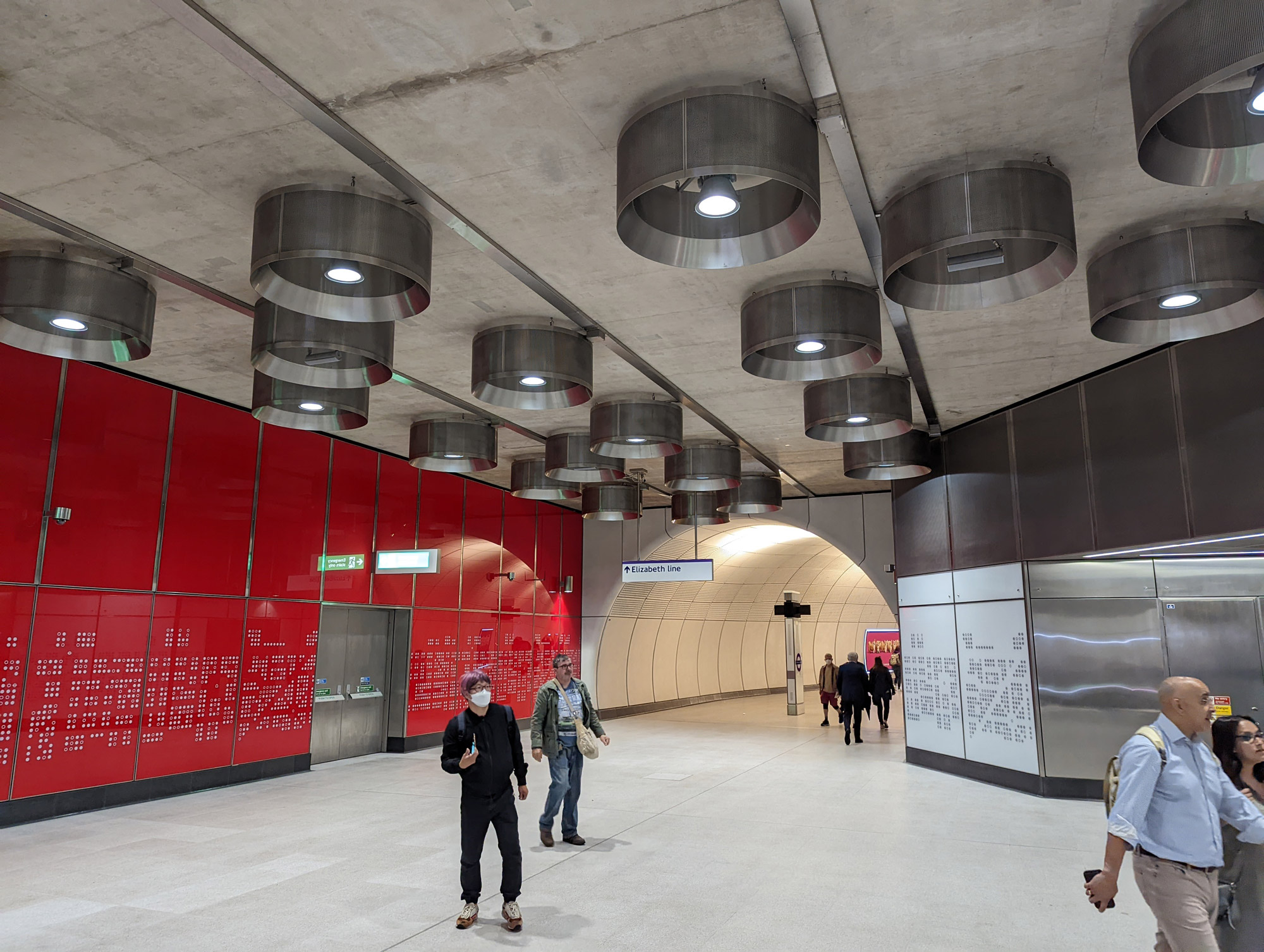
Interesting lighting choices at Tottenham Court Road. Credit: Peter Nilson
The importance of the Elizabeth Line is that it will alleviate the stress on existing services. As of launch, it is shuttling up to 1,500 passengers into Central London every 5 minutes. That’s up to 18,000 people per hour, both ways. The Elizabeth Line will reportedly increase rail capacity in London by 10% – that’s the largest single increase in more than 70 years.
It also reduces journey times. Going from Woolwich to Whitechapel is down to 9 minutes from around 25-30 minutes. Farringdon to Canary Wharf will now take just 10 minutes, more than 50% quicker than the previous journey time. Broadly speaking, if you’re using the Elizabeth Line for part of your journey, I think it will probably be quicker.
What the Elizabeth Line also does is bring people nearer to London. 1.5 million more people will be within a 45-minute commuting distance to Central London, which will bring economic benefits for both the city and the towns in this new widened commuter belt. Nationally, its estimated to contribute create £42bn ($49.6bn) to the UK economy.
The emphasis for transport developments for London moving forward shouldn’t necessarily be to serve locations, they should serve capacity.
The population of the metropolitan area of London in 2021 was 9,426,000 and continues to grow. Sure, the pandemic dented passenger numbers, but the TfL network is back to 73% of pre-pandemic levels. As that percentage grows nearer to 100% and beyond, the Elizabeth Line will offer welcome breathing room for passengers still holding concerns about Covid-19.
I suspect that even commuters that don’t use the Elizabeth Line will be aided by the extra bandwidth that it gives the network. Combined with other projects like the wonderfully named Thameslink 2000, which broke ground in 2009 and was completed in 2020, it’s clear to me that the emphasis for transport developments for London moving forward shouldn’t necessarily be to serve locations, they should serve capacity.
More high-capacity projects will be needed
On an escalator in Farringdon station yesterday, I overheard a fellow traveller say, “I normally get the Northern Line, but I really wanted to see what this was like.” I’ve got to say, I was surprised by the enthusiasm I saw yesterday from passengers who, I would guess, were not rail enthusiasts. I certainly heard a few "wows" as passengers walked onto the trains.
I suspect a lot of people will divert their journeys over the next few weeks to explore the Elizabeth Line, and I think once they have, they might decide it’s better to do so every time. I for one used to choose a slightly longer TfL rail journey to commute into London rather than use a horrible, cramped tube (still looking at you, Central Line). Maybe the Elizabeth Line will do the same for others.
Last week, Prime Minister Boris Johnson told reporters that he wanted to “get on with” Crossrail 2, which would run across London on a South-West to North-East axis. The project was abandoned due to funding issues, but if there is enough political will then it can surely be resurrected. Let’s just hope that if it does, it won’t take as long as Crossrail did.
Main image: Woolwich is one of ten new stations built on the Elizabeth Line. Credit: Peter Nilson